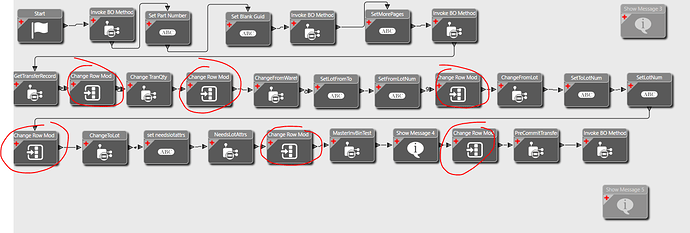@JasonMcD thanks for the inspiration yesterday.
I finished a BPM on ABCCode.Update Post processing that transfers 10 units of inventory from one warehouse bin to another. I hardcoded everything that would normally be put in by a user (dynamic data) such as part number, warehouse, lot, etc… I am still learning how it all fits together. I also don’t think I am doing the row mod update correctly, do I really need to add it before each call?
What I wanted to ask you @JasonMcD is what you do with some of the business logic calls where the methods don’t make changes to the dataset, but rather they return a message (which usually would result in an exception being thrown)? When you trace something there will be methods called that just return a message, or they are doing some type of check… If those were ran natively in the application some sort of warning message or even exception pops up. Did you have any of those calls when you traced the labor method? What did you do with those, did you handle them like the application does?
